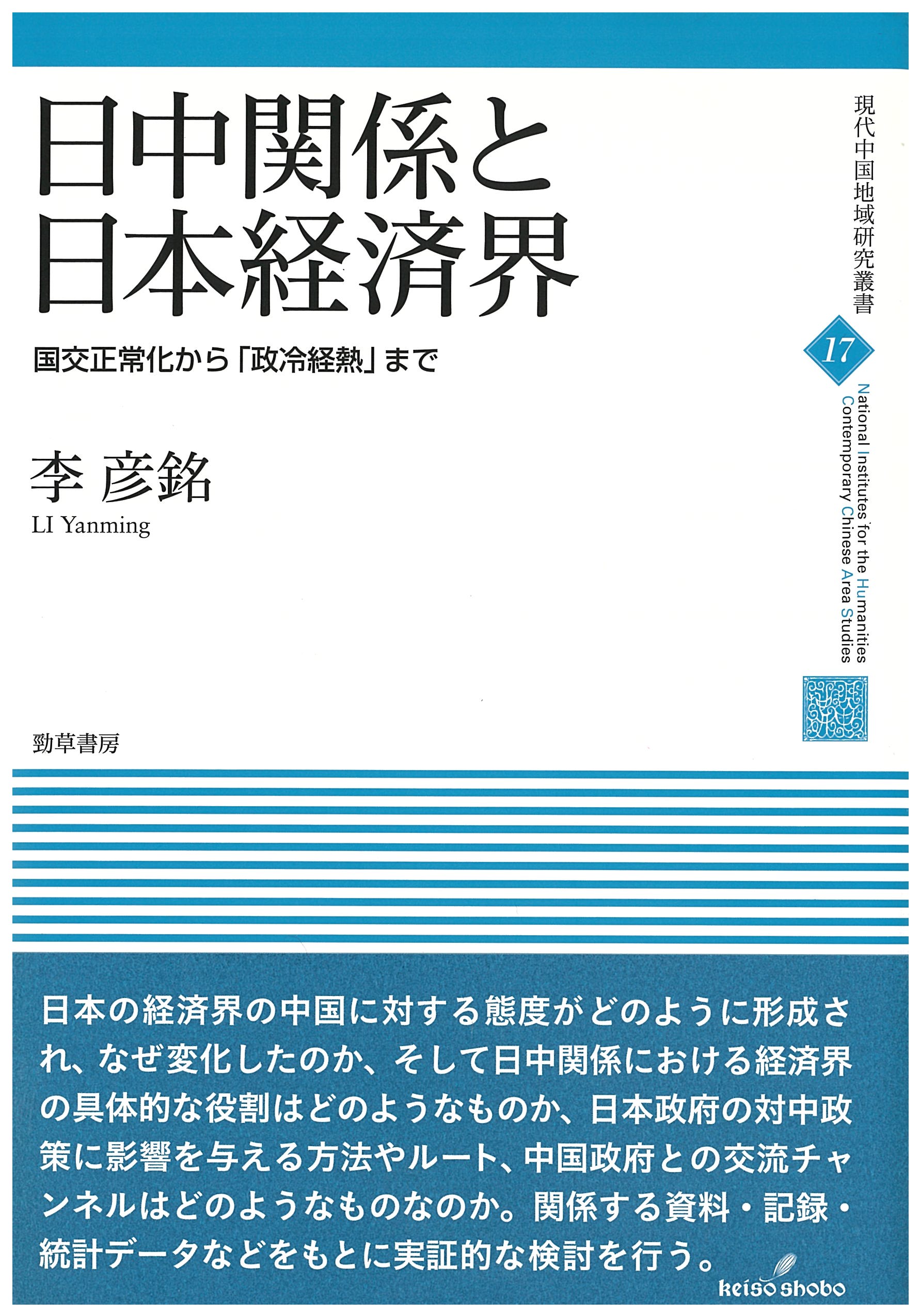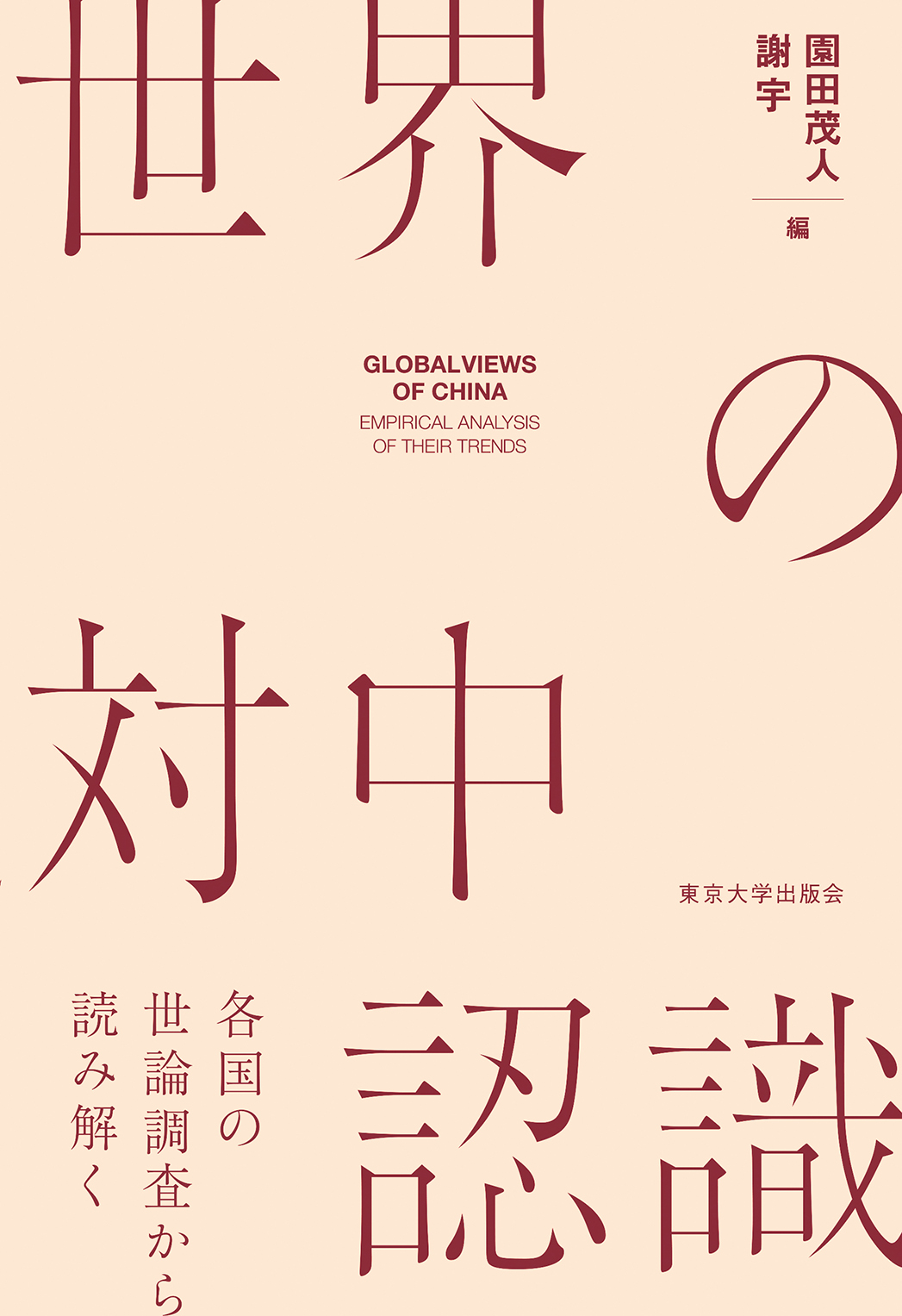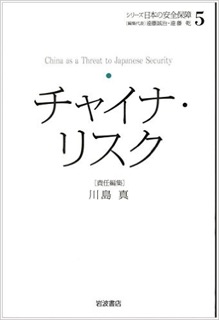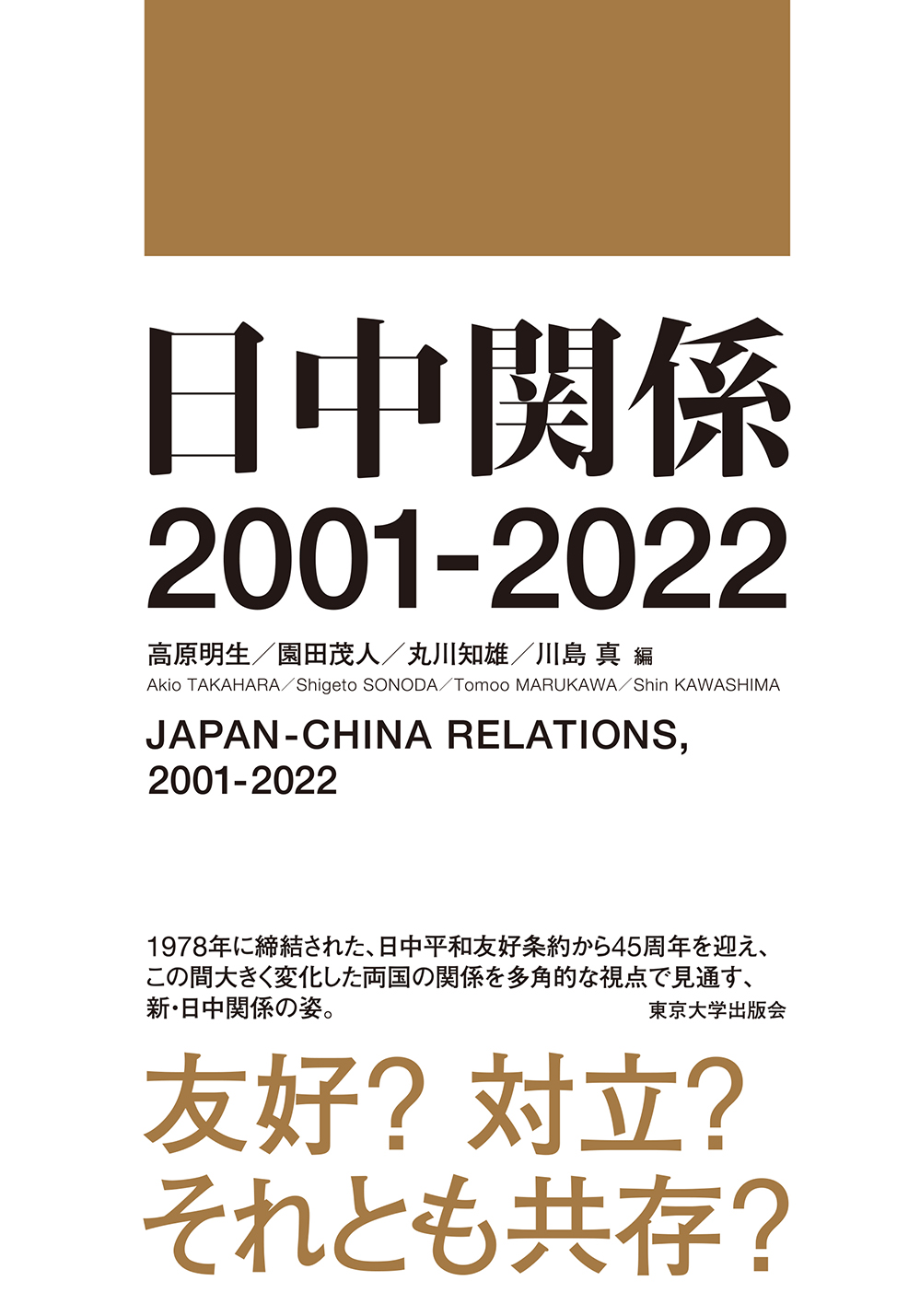
Title
[Contemporary Chinese Area Studies Series] Nitchuukankei to nihon keizaikai (Sino-Japanese Relations and Japanese business society - From Normalization of Diplomatic Relations to "Hot Economics, Cold Politics")
Size
336 pages, A5 format
Language
Japanese
Released
February, 2016
ISBN
978-4-326-34907-4
Published by
Keiso Shobo
Book Info
See Book Availability at Library
Japanese Page
The author was encouraged to begin this study based on her own experience as an exchange student in Japan in 2004 and 2005. At that time, Sino-Japanese relations were tagged as “seirei keinetsu” (cold political relations accompanied by hot economic relations). Although the Sino-Japanese economic links and human interactions have become increasingly cordial after China joined the WTO, political relations and public opinion have deteriorated because of certain historic issues. Eventually, in the spring of 2005, nationwide anti-Japan demonstrations occurred, just the first ones in the new century.
To study why such opposition arose, it is necessary to convert this problem’s awareness, noted in routine life, into an academic question. In other words, identifying a perspective that is verifiable and has academic significance is necessary. Thus, the observation target selected for this book consists of those involved in the business world in Japan. First, their perceptions of China and their roles in the political relations between Japan and China were extensively investigated by the author. Then, a hypothesis was proposed and tested about the mechanisms by which these perceptions are formed, as well as the mechanisms that support their political roles. Although the book is not an historical overview, the cases in which the business community’s role was large (such as in the beginning of the 1970s, before the normalization of diplomatic relations in 1972) that previous studies had identified, and the cases in which the role was small (such as the “hot economics, cold politics” period) were compared. As a result, the book covers the period from the beginning of the 1970s to the early 2000s.
The main conclusions about the mechanisms with which the businesses community exerts political influence on Sino-Japanese relations are that the following three conditions are essential: 1) the existence of a certain agreement between the international strategies of different companies and industries; 2) functioning of personal networks that link the business community and government/politicians, referred to in this book as “industry policy linked networks;” and 3) prioritization of economic development and a special focus on Japan’s past or current growth model/industrial strategy by the Chinese government when they are making decisions on foreign policy. The future role of the Japanese business community can be predicted from the continued existence of these conditions, and from the changes in them.
Moreover, the author emphasizes that the international strategies of companies, as well as industries, fundamentally depend on the perceptions of the trends of the international economy (largely determined by the US market). The business community only considers the Chinese side’s strategic demands and investment inducements against this background. That means the decisions of the business community in each case were not the results of emotional arguments or Chinese inducements, but were rational calculations, although they were made amid limited information and perception frameworks. For example, throughout the 1970s, the businesses community held a basic recognition that “plant exports” (exports of a whole factory set, including machinery, expertise, and maintenance as a package; in other words, the infrastructure exports that are currently in the spotlight; the major export markets in the 1970s were communist countries and developing nations) would bring about growth while avoiding trade frictions with the US and Europe. This was not only the main reason, but also the main policy tool to support the development of relations between Japan and communist China. In the meantime, the leaders of the business community have also succeeded in sharing this policy idea about “improving plant exports” with the Japanese government, and converted it into policies on China, including Official Development Assistance (ODA, including Yen-Loan to China). Another example is the strategy of “investing in Asia,” which I will omit in this essay for conciseness.
Of course, such “rational” predictions can often be mistaken. In fact, during the 1980s and 1990s, “plant exports” could not become the engine that powered the Japanese economy. However, the development of “plant exports” toward China still has very fundamental and broad influences--it has evoked the first Yen-Loan to China, a large circle of personal networks, and numerous technology transfers between China and Japan. These transactions have not only supported the stability of political relations, forming the basis that allowed the development of economic relations between the two countries, but they have helped pull China into the US-led international trade system. The serious question facing us currently is how this legacy of history should be handled and inherited.
(Written by LI Yanming, Project Assistant Professor, Graduate School of Arts and Sciences / 2018)



 Find a book
Find a book


 eBook
eBook




